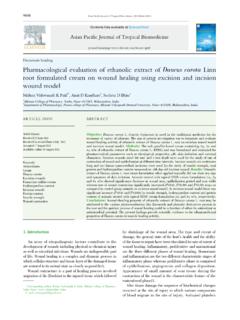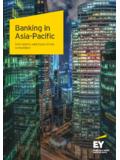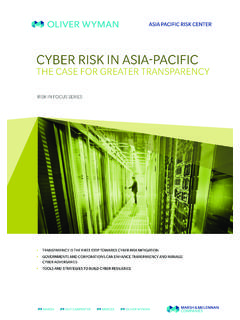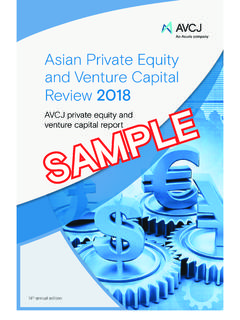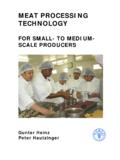Transcription of OECD DEVELOPMENT CENTRE
1 OECD DEVELOPMENT CENTRETHE EMERGING MIDDLE CLASS IN DEVELOPING COUNTRIESbyHomi KharasResearch area:Global DEVELOPMENT OutlookJanuary 2010 Working Paper No. 285 The Emerging Middle Class in Developing Countries DEV/DOC(2010)2 2 OECD 2010 DEVELOPMENT CENTRE WORKING PAPERS This series of working papers is intended to disseminate the DEVELOPMENT CENTRE s research findings rapidly among specialists in the field concerned. These papers are generally available in the original English or French, with a summary in the other language.
2 Comments on this paper would be welcome and should be sent to the OECD DEVELOPMENT CENTRE , 2 rue Andr Pascal, 75775 PARIS CEDEX 16, France; or to Documents may be downloaded from: or obtained via e-mail THE OPINIONS EXPRESSED AND ARGUMENTS EMPLOYED IN THIS DOCUMENT ARE THE SOLE RESPONSIBILITY OF THE AUTHOR AND DO NOT NECESSARILY REFLECT THOSE OF THE OECD OR OF THE GOVERNMENTS OF ITS MEMBER COUNTRIES OECD (2010) Applications for permission to reproduce or translate all or part of this document should be sent to CENTRE DE D VELOPPEMENT DOCUMENTS DE TRAVAIL Cette s rie de documents de travail a pour but de diffuser rapidement aupr s des sp cialistes dans les domaines concern s les r sultats des travaux de recherche du CENTRE de d veloppement.
3 Ces documents ne sont disponibles que dans leur langue originale, anglais ou fran ais ; un r sum du document est r dig dans l autre langue. Tout commentaire relatif ce document peut tre adress au CENTRE de d veloppement de l OCDE, 2 rue Andr Pascal, 75775 PARIS CEDEX 16, France; ou Les documents peuvent tre t l charg s partir de: ou obtenus via le m l LES ID ES EXPRIM ES ET LES ARGUMENTS AVANC S DANS CE DOCUMENT SONT CEUX DE L AUTEUR ET NE REFL TENT PAS N CESSAIREMENT CEUX DE L OCDE OU DES GOUVERNEMENTS DE SES PAYS MEMBRES OCDE (2010) Les demandes d'autorisation de reproduction ou de traduction de tout ou partie de ce document devront tre envoy es OECD DEVELOPMENT CENTRE Working Paper DEV/DOC(2010)2 OECD 2010 3 TA B LE OF CO NT EN TS ACKNOWLEDGEMENTS.
4 4 PREFACE .. 5 R SUM .. 6 ABSTRACT .. 6 I. INTRODUCTION .. 7 II. DEFINING THE MIDDLE CLASS .. 10 III. MEASURING THE GLOBAL MIDDLE CLASS .. 14 IV. PROJECTING GDP AND TRENDS IN THE GLOBAL MIDDLE CLASS .. 17 V. A NOTE ON CHINA AND INDIA .. 30 VI. CONCLUSION .. 38 ANNEX 1. PROJECTIONS METHODOLOGY .. 40 REFERENCES .. 50 OTHER TITLES IN THE SERIES/ AUTRES TITRES DANS LA S RIE .. 53 The Emerging Middle Class in Developing Countries DEV/DOC(2010)2 4 OECD 2010 ACKNOWLEDGEMENTS I would like to acknowledge and thank Geoff Gertz of the Wolfensohn Center for DEVELOPMENT for his work on developing the Four Speed World scenario.
5 Dan Hammer from the Center for Global DEVELOPMENT generously contributed the map showing the shifting economic CENTRE of gravity in the world. An anonymous referee and Andrew Mold, DEVELOPMENT CENTRE , OECD, provided very helpful comments. OECD DEVELOPMENT CENTRE Working Paper DEV/DOC(2010)2 OECD 2010 5 PREFACE Over the last twenty years, economic and political power has been shifting towards emerging economies. A number of developing countries have become centres of strong growth, raising their shares of global income significantly, which has made them major players in regional and global affairs.
6 Furthermore, flows of trade, aid and investment between emerging and developing countries have all intensified. The Global DEVELOPMENT Outlook 2010 presents the evidence which documents these changes, what we call Shifting Wealth . As the world emerges from the crisis, the report clarifies this new global reality and what it means for DEVELOPMENT . Clearly, it implies that DEVELOPMENT strategies need to be rethought in the new international environment. The GDO 2010 suggests ways in which developing countries can best take advantage of the new economic landscape and supports calls for global governance to be reformed, making it more inclusive.
7 The Global DEVELOPMENT Outlook has been guided by and contributed to by eminent scholars from developing and emerging countries, our Non-Residential Fellows. This paper, by Homi Kharas, from the Brookings Institute in Washington, is one of the first to be published in the series. The theme is a fascinating one, looking at the potential growth of the global middle class in the developing world. In the aftermath of the financial crisis, Homi s paper carries an important message - over the coming decades Asia s emerging middle class will be large enough to become one of the main drivers of the global economy.
8 The story told here is representative of the changing dynamics of the global economy, whereby accepted wisdoms need to re-examined and reconsidered in the light of the Shifting Wealth of Nations . Javier Santiso Director, OECD DEVELOPMENT CENTRE January 2010 The Emerging Middle Class in Developing Countries DEV/DOC(2010)2 6 OECD 2010 R SUM La r partition mondiale de la production industrielle en faveur de l Asie est un ph nom ne largement d montr.
9 Quant la demande de consommation mondiale, elle provenait jusqu ici des conomies riches des pays de l OCDE. Au fur et mesure que les pays d Asie s enrichissent, cette demande de consommation va-t-elle son tour se d placer en leur faveur? Dans ce document de travail, la classe moyenne est d finie comme foyers revenus moyens par t te entre USD10 et USD100, en termes de pouvoir d achat. En associant des donn es r colt es lors d enqu tes aupr s de m nages des projections de croissance dans 145 pays, on s aper oit que l Asie repr sente moins d un quart de la classe moyenne d aujourd hui.
10 Cette proportion pourrait doubler d ici 2020. Plus de la moiti de la classe moyenne mondiale se situerait alors en Asie, et les consommateurs asiatiques pourraient repr senter plus de 40 pour cent de la consommation mondiale des classes moyennes. Cela est d au fait qu un grand nombre de foyers asiatiques per oive aujourd hui des revenus les positionnant juste en dessous du seuil de la classe moyenne mondiale. Pour cette raison, il est pr vu que, dans les dix prochaines ann es, de plus en plus d Asiatiques fassent partie de la classe moyenne.











